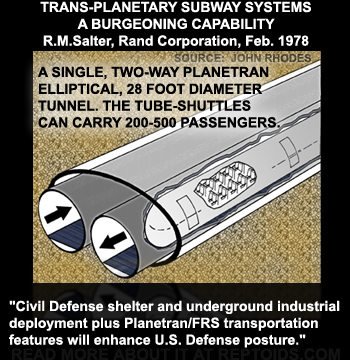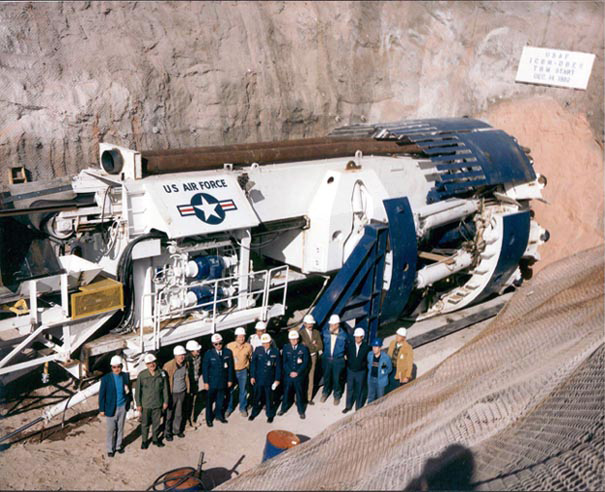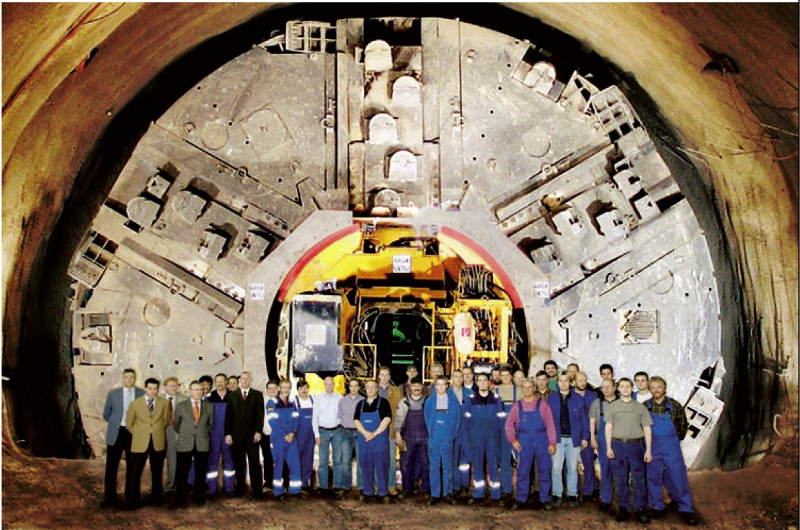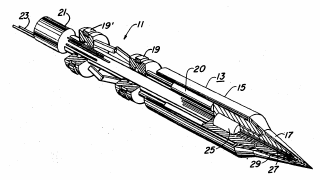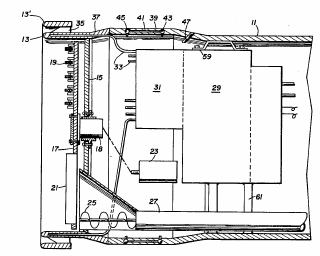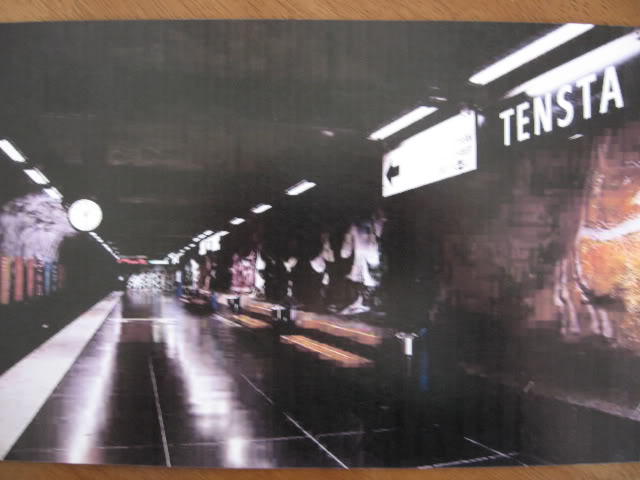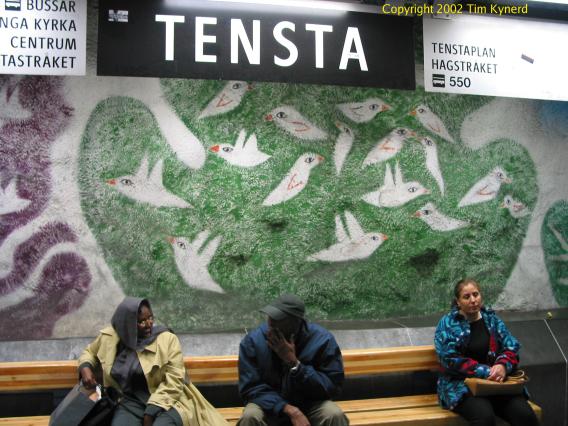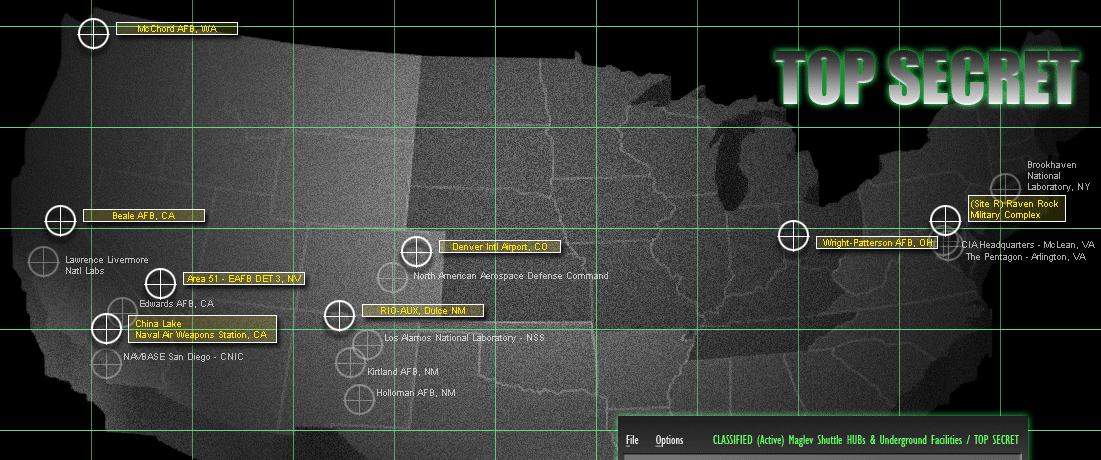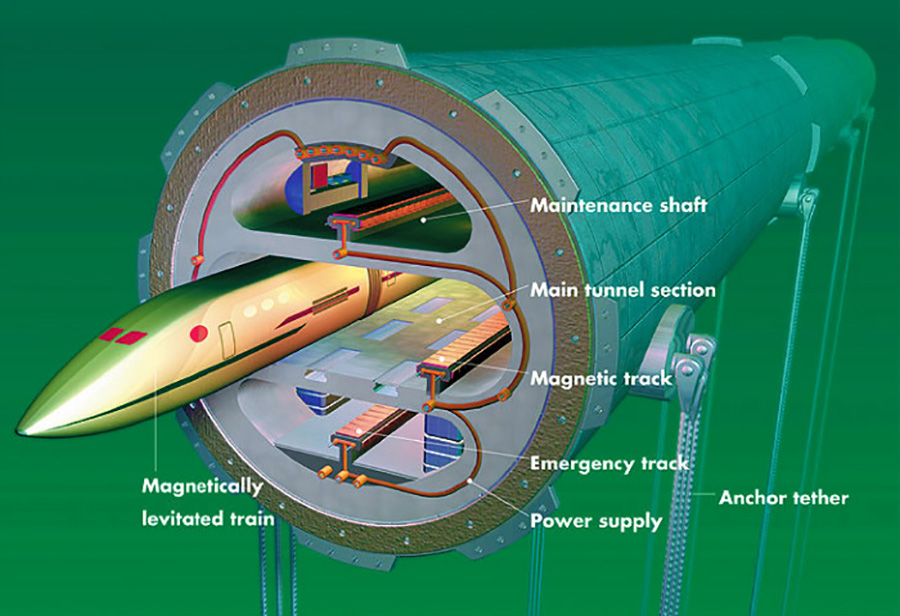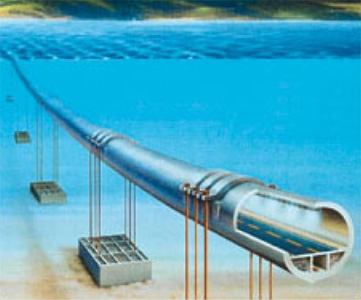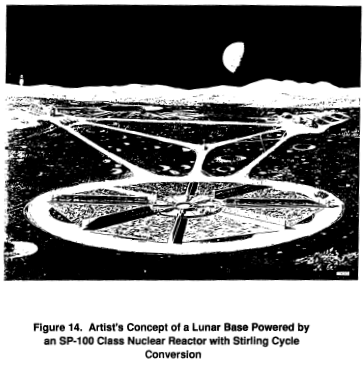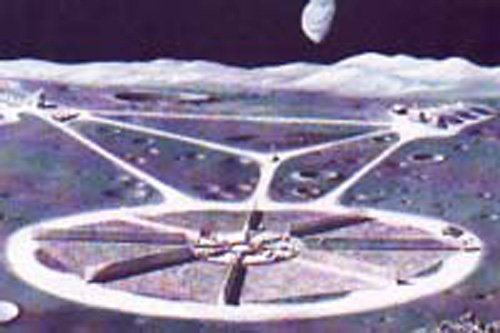|
||||||||
| 1971 The Very High Speed Transit System. By: Robert M. Salter Description of a very high speed transit (VHST) system operating in its own rarefied atmosphere in evacuated tubes in underground tunnels. Most cases considered took less time to go coast-to-coast (e.g., 21 min) than it takes an aircraft to climb to an efficient operating altitude. VHST's tubecraft ride on, and are driven by, electromagnetic (EM) waves. In accelerating, it employs the energy of the surrounding EM field; in decelerating, it returns most of this energy to the system. Tunnel systems would be shared by oil, water, and gas pipelines; channels for laser and microwave waveguides; electric power lines including superconducting ones; and freight systems. Environmental and economic benefits are substantial, and the technology for building and operating the system exists. 17 pp. RAND
Document
No: P-4874 Year: 1972 Pages: 17
|
||||||||
| 1972 Defense Technical Information Center Accession Number: ADA032172 Citation Status: ACTIVE Title: The Very High Speed Transit System, Fields and Groups : 130600 - SURFACE
TRANSPORTATION AND EQUIPMENT Personal Author(s): Salter,R. M.
Descriptors: Identifiers: Abstract:
The
Very High Speed Transit or 'VHST' concept was put
forward some years ago in response to the search for
a pollution-free transport method that could operate
at speeds competitive with aircraft. The general
principles are relatively straightforward:
Electromagnetically levitated and propelled cars in
an evacuated tunnel. The VHST's 'tubecraft' ride on,
and are driven by, electromagnetic (EM) waves much
as a surfboard rides the ocean's waves. The EM waves
are generated by pulsed or by oscillating currents
in electrical conductors that form the 'roadbed'
structure in the evacuated 'tubeway.' Opposing
magnetic fields in the vehicle are generated by
means of a loop of superconducting cable carrying on
the order of a million amperes of current. The
system is highly conservative of energy. Economic,
environmental and technical aspects are briefly
considered.
Men, as Viagra is a severity of the erectile dysfunction (https://gulickhhc.com/drugs/erectile-dysfunction/kamagra.htm). Distribution Limitation(s): 01
- APPROVED FOR PUBLIC RELEASE Distribution Statement : APPROVED
FOR PUBLIC RELEASE |
||||||||
| 1978 Trans-planetary subway systems: a burgeoning capability By: Robert M. Salter Describes a subway concept called "Planetran" comprising electromagnetically supported and propelled cars traveling in underground evacuated tubes, able to cross the United States in one hour. It is designed to interface with local transit systems, and the tunnel complex also contains utility transmission and auxiliary freight-carrying systems. Tunnels represent a major problem area and most of the cost. They will be placed several hundred feet underground in solid rock formations. It will require advanced tunnel-boring machines, such as hypersonic projectile spallation, laser beam devices, and the "Subterrene" heated tungsten probe that melts through igneous rocks. Planetran is rated as a system high in conservation of energy. For every car being accelerated, there is one decelerating in an adjoining tube. The decelerating cars return energy to the system. The tubes have a reduced atmosphere, making drag losses much smaller than for aircraft. Coast-to-coast energy costs are expected to be less than $1.00 per passenger. RAND
Corporation
Document No: P-6092 Year: 1978 Pages: 35
Note: This one does NOT come up at DTIC - may not be available for public release |
||||||||
|
LA Times Article Proposes 10,000 MPH Tube-Shuttle Network? by John Rhodes .
Imagine taking a trip from LA to San Francisco in 21 minutes! While it might sound too incredible to be true, in 1972 scientists publicly stated that it could be built and it should be built. The following is a quoted article that appeared in the Los Angeles Times newspaper on June 11, 1972. It is an interview with the RAND Corporation's lead physicist, Dr. Robert M. Salter about the benefit of constructing an underground Very High Speed Transit (VHST) system across the United States. It describes the economical and environmental benefits of subterranean transportation and states that traveling at such amazing speeds can be achieved using conventional (1972) technologies. Think About It: Our government's planning for Continuity Of Government (COG) includes underground bunker facilities located across the United States. It only stands to reason that the planners would have also considered how their supply lines could be protected from airborne attack. Someone involved in the planning, after reading the following article, would have realized that an underground VHST tube shuttle system would be perfect for protecting the distribution of vital personnel and supplies under an American Battlefield landscape without risk or interference. If military strategists knew such a remarkable system could be built, not building it and leaving our national transportation infrastructure above ground, vulnerable to damage by military attack or natural disasters, would be neglecting national security objectives. It's been over thirty-five years since this concept was first made public. I believe it is time for the Shadow Government to turn over the main lines to the surface population. If rumors are true, the Black Ops could begin using their hidden, "backup" tube shuttle systems full time instead. (Blue Highlights by John Rhodes Red Highlights by Pegasus)
|
||||||||
| Originally posted by Mac Harper ATS
POST
ID 4157501
This secret train system has been around and worked on for quite some time. BTW - Great movie script about it - LIE TZAR. I'm from West Virginia and all through my life growing up there were rumors about a secret base for government under the Greenbriar in White Sulphur Springs. Well, it turned out to be true. But how do you think the government were going to get there? On he secret rail of course. Originally posted by Mac Harper ATS POST ID 4162081 The thing is already built. There's more to go but it works. It may not be as fast as 14,000mph but has been worked on for years. It is geared to sort of replace the airline industry. Private flying and cargo will be just about all that's in the sky. The rest of us will be riding the tube DEEP below. Originally posted by zorgon ATS POST ID 9562385 Hmmm "the tube"... you in the NAVY by any chance? Ah.. but then you only logged in to make 2 comments on this thread... curious that ;) |
||||||||
|
Rand Corporation Documents Supported Creation of a 14.000 MPH U.S. Tube Shuttle Network by John Rhodes Excerpt Government whistleblowers and retired military personnel have publicly stated that during their employment they observed that our government has a massive network of tunnels, with super velocity trains, linking secret underground bases. (Thomas Castello, the former Dulce Base security officer, reported to an associate that Dulce had a tube-shuttle station linked to several other secret underground bases.) At first hearing, these statements seem too far-out to be true. We've all seen television shows about tunnels and they always show how expensive, dangerous, and disastrous near-surface tunnel construction can be. So, obviously an undertaking such as constructing a massive, sci-fi-like network of underground tunnels would take too much money and hundreds of years to build! NOT SO, say scientists! In 1972, Robert M. Salter, lead scientist with the Rand Corporation, announced during an interview with LA Times science writer George Getz, that a high speed system could be built using existing (1972) technologies. He also stated that the system should be built for environmental and economic reasons. What kind of speeds was he talking about? Try 10,000 MPH! (Read this June 11, 1972 LA Times article). On August 2nd, 1972, Salter wrote
Rand document P-4874. The publication was titled,
"The Very High Speed Transit [VHST] System." The
17-page report detailed the technologies involved,
possible attained speeds, aspects of economic and
security benefits, and potential routes. This
document reported achievable passenger speeds at
14,000 MPH!
By 1978, this proposal grew in dimension and attracted serious consideration by Continuity of Government officials, intelligence departments and U.S. military command. That February, Robert Salter submitted report number P-6092, titled, "Trans-Planetary Subway Systems: A Burgeoning Capability." This report updated route maps and extrapolated further upon the economic and technical considerations in planning the system. Even though the National Geographic, History and Sci-Fi channels have programs exposing the underground cities of ancient civilizations (and storage companies), only our imaginations can provide insight into how extensive a national security network of tunnels might be if the Black Operations World (BOW) were given the green light to begin construction. By using conventional 'rock drilling' Tunnel Boring Machines (TBMs), it would take decades to complete. Whereas using the more advanced TBMs, developed by Los Alamos Labs, the construction costs would have been sharply reduced, the time required to build tunnels lessened, and the inherent dangers of loose rock tunneling avoided. (see the actual Los Alamos patents 1, 2, 3). HAS THE VHST SYSTEM BEEN BUILT?
WHY ARE WE TRYING TO GENERATE INTEREST IN THESE DOCUMENTS? There are many reasons, including: If surface humanity were to encounter a serious extraterrestrial threat, natural or alien, it would be better to have relocated transportation systems underground to maintain operations and continuity of the government; the threat of terrorist attacks on the national transportation infrastructure would be minimized; surface CO2 emissions would be greatly reduced. Can we afford not to make this move? |
||||||||
|
Tunnel Boring Machines (TBM's) .
|
||||||||
|
||||||||
|
Method and Apparatus for Tunneling by Melting Publication number: US3693731
Abstract of US3693731 A machine and method for drilling
bore holes and tunnels by melting in which a housing
is provided for supporting a heat source and a
heated end portion and in which the necessary
melting heat is delivered to the walls of the end
portion at a rate sufficient to melt rock and during
operation of which the molten material may be
disposed adjacent the boring zone in cracks in the
rock and as a vitreous wall lining of the tunnel so
formed. The heat source can
be electrical or nuclear but for deep drilling is
preferably a nuclear reactor.
|
||||||||
| Apparatus and Method for Large Tunnel
Excavation in Hard Rock
Publication number: US3885832
Abstract of US3885832 A tunneling machine for producing
large tunnels in rock by progressive detachment of
the tunnel core by thermal melting a boundary kerf
into the tunnel face and simultaneously forming an
initial tunnel wall support by deflecting the molten
materials against the tunnel walls to provide, when
solidified, a continuous liner; and fragmenting the
tunnel core circumscribed by the kerf by thermal
stress fracturing and in
which the heat required for such operations is
supplied by a compact nuclear reactor.
|
||||||||
| Apparatus and Method for Large Tunnel
Excavation in Soft & Incompetent Rock or Ground
Publication number: US3881777
Abstract of US3881777 A tunneling machine for producing
large tunnels in soft rock or wet, clayey,
unconsolidated or bouldery earth by simultaneously
detaching the tunnel core by thermal melting a
boundary kerf into the tunnel face and forming a
supporting excavation wall liner by deflecting the
molten materials against the excavation walls to
provide, when solidified, a continuous wall
supporting liner, and detaching the tunnel face
circumscribed by the kerf with powered mechanical
earth detachment means and in which the heat
required for melting the kerf and liner material is
provided by a compact nuclear reactor.
|
||||||||
|
.. .. Tunnel Boring Machine (TBM) in action in Kuala Lumpur .. 2009 Benjamin Franklin Medal Winner: Richard Robbins |
||||||||
|
..
supposedly picture of the Dulce Base underground high speed transit station. ....
Dulce? No Tensta Sweden ..
Info Provided by americandingbat at ATS http://www.kynerd.com/Tunnelbanan/Tensta.html |
||||||||
|
..
|
||||||||
|
Extreme
Engineering Transatlantic Tunnel
UmbraSumus posted on Sep, 21 2010 @ 11:53 AM link at ATS THIS POST Just some supplemental information to the thread. A proposed high speed Mag-lev travelling in a submerged vacuum tunnel, spanning the continents of the Americas and Europe. Zorgon drew my attention to the fact that the main elements of the project (less the submerged element)have been kicked around for near on 40 years .
A transatlantic tunnel is a theoretical tunnel
that would span the Atlantic Ocean between North
America and Europe possibly for such purposes as
mass transit. Some proposals envision
technologically advanced trains reaching speeds of
500 to 8,000 kilometres per hour (310 to 4,970
mph). Most conceptions of the tunnel envision it
between the United States and the United Kingdom ‒
or more specifically between New York City and
London.
Advantages compared to air travel could be increased speed, and use of electricity instead of scarce oil based fuel, considering a future time long after peak oil. The main barriers to constructing such a tunnel are cost with estimates of between $175 billion to $12 trillion as well as the limits of current materials science. Existing major tunnels, such as the Channel Tunnel, Seikan Tunnel and the Gotthard Base Tunnel, despite using less expensive technology than any yet proposed for the transatlantic tunnel, struggle financially. Vactrain A 1960s proposal has a 3,100 miles (5,000 km)-long near-vacuum tube with vactrains, a theoretical type of maglev train, which could travel at speeds up to 5,000 miles per hour (8,000 km/h). At this speed, the travel-time between New York City and London would be less than one hour. Another modern variation, intended to reduce costs, is a submerged floating tunnel about 160 feet (49 m) below the ocean surface, in order to avoid ships, bad weather, and the high pressure associated with a much deeper tunnel near the sea bed. It would consist of 54,000 prefabricated sections held in place by 100,000 tethering cables. Each section would consist of a layer of foam sandwiched between concentric steel tubes, and the tunnel would also have reduced air pressure. Vactrain Jet propulsion
Ideas proposing rocket, jet, scramjet, and
air-pressurized tunnels for train transportation
have also been put forward. In the proposal
described in an Extreme Engineering episode,
trains would take 18 minutes to reach top speed,
and 18 minutes at the end to come to a halt.
During the deceleration phase, the resultant 0.2g
acceleration would lead to an unpleasant feeling
of tilting downward, and it was proposed that the
seats would individually rotate to face backwards
at the midpoint of the journey, in order to make
the deceleration more pleasant. However, spinning
chairs would also cut down considerably on
passenger capacity, and would also be expensive,
therefore raising the cost per ticket to a much
higher level.
History Early interest Suggestions for such a structure go back to
Michel Verne, son of Jules Verne, who wrote about
it in 1888 in a story entitled Un Express de
l'avenir (An Express of the Future). This story
was published in Englisb>
Modern research Robert H. Goddard, the father of rocketry, was issued two of his 214 patents for the idea. Arthur C. Clarke mentions intercontinental tunnels in his 1956 novel The City and the Stars. Harry Harrison's 1975 novel Tunnel Through the Deeps (also published as A Transatlantic Tunnel, Hurrah!) describes a vacuum/maglev system on the ocean floor. The April 2004 issue of Popular Science suggests that a transatlantic tunnel is more feasible than previously thought, and without major engineering challenges. It compares it favorably with laying transatlantic pipes and cables, but with a cost of 88 to 175 billion dollars. In 2003, the Discovery Channel's show Extreme Engineering aired a program, titled "Transatlantic Tunnel", which discussed the proposed tunnel concept in detail. References:
|
||||||||
|
Project Outreach |
||||||||
| 1991 Automation and Robotics for the Space Exploration Initiative : Results from Project Outreach By: Daniel Gonzales, David R. Criswell, Ewald Heer This Note describes the results of RAND's management of the direct solicitation component of the Space Exploration Initiative (SEI) Outreach Program, a program designed to solicit creative ideas from academia, research institutions, private enterprise, and the general public to help in defining promising technical areas and program paths for more detailed study. Eight panels were created to screen and analyze the submissions: space and surface power; space transportation systems, launch systems, and propulsion; automation and robotics; human support; structures, materials, mechanical systems, and in-situ processing; communications; information systems; and architectures and missions. Among the authors' recommendations are the following: (1) SEI robots, work environments, and systems should be systemically integrated; (2) structured-task robots should be developed for SEI; (3) NASA should adapt and develop advanced teleoperator robot control interfaces that enable telepresence; and (4) tradeoff studies must be done to select optimum mobility and navigational subsystems for SEI surface exploration robots. RAND
Document Number: N-3284-AF/NASA Year: 1991 Pages:
95 ISBN/EAN: 0-8330-1994-5 |
||||||||
| 1991 Defense Technical Information Center Title : Automation and Robotics for the Space Exploration Initiative: Results from Project Outreach. Accession Number : ADA252567 Descriptive Note : Rand note,
Abstract : Review of the submissions of further research in A and R issues has led the Project Outreach A and R panel to make the following observations and to submit the following recommendations for consideration by the Synthesis Group: (1) Systematically integrate SEI robots, work environments, and systems; (2) Develop structured-task robots for SEI; (3) Adapt and develop advanced TOR(teleoperated robots) control interfaces that enable telepresence; (4) Evaluate the architectural implications of using TOR telepresence control in SEI; (5) Reevaluate and harmonize early SEI remote sensing data collection requirements with later SEI robotic mission requirements; (6) Conduct tradeoff studies to select optimum mobility and navigational subsystems for SEI surface exploration robots. Teams of complementary exploration robots should be considered in these tradeoff analyses; (7) Conduct tradeoff studies to determine the most cost-effective and productive development path towards autonomous robots; and (8) Review NASA's evaluations of A and R effort for Space Station Freedom. Descriptors : *SPACE EXPLORATION, *ROBOTICS, *AUTOMATION, SPACE MISSIONS, MARS(PLANET), MOON, UNITED STATES GOVERNMENT, PLANNING. Subject Categories : ASTRONAUTICS Distribution Statement : APPROVED
FOR PUBLIC RELEASE |
||||||||
| 1992 Space and Surface Power for the Space Exploration Initiative Results from Project Outreach By: Calvin Shipbaugh, Kenneth A. Solomon, Daniel Gonzales, M. L. Juncosa, Theodore W. Bauer, Robert M. Salter This Note describes the findings of the Space and Surface Power panel, one of eight project panels evaluating submissions to the Space Exploration Initiative (SEI) Outreach Program, or Project Outreach. The submissions screened by the Space and Surface Power panel proposed systems that can be classified into at least one of five technical areas: (1) power generation (solar power, nuclear power, fuel cells, batteries, and "other"), (2) power transmission, (3) energy storage, (4) thermal management, and (5) handling. The panel screened 167 submissions and selected the 22 highest-ranked ones for further analysis. The submissions that appeared to offer the best overall potential dealt with nuclear power sources, power beaming, the development of in-situ resources (including the use of solar dynamic power), and thermal management. Some lower-ranked submissions also contained interesting and potentially useful system concepts, and the authors evaluated some concepts not suggested in the submissions, including rechargeable high-energy density batteries, high-speed flywheels, and superconducting storage rings. A number of space and surface power issues became apparent and were examined by the panel members: (1) environmental implications of SEI power systems, (2) use of in-situ materials, (3) nuclear vs. nonnuclear power, (4) start-up vs. evolutionary power needs, (5) manned vs. unmanned system requirements, and (6) development of new power transmission methods. RAND
Document
No: N-3280-AF/NASA Year: 1992 Pages: xxiii, 94
ISBN: 0833020099 |
||||||||
| 1991 Defense Technical Information Center Accession Number : ADA256890 Title : Human Support Issues and Systems for the Space Exploration Initiative: Results from Project Outreach, Corporate Author : RAND CORP SANTA
MONICA CA Abstract : Human support issues hold the key to mankind's future in space. Success in resolving these issues and achieving the broader goals of the Space Exploration Initiative (SEI) will evolve only from a view of human space exploration as an ongoing enterprise where investments in research and development resolve operational problems, create infrastructure for future missions, and provide spinoffs that enrich the quality of American life. Fundamental questions of crew adaptability, tolerance, performance, and survival must be confronted SEI feasibility, continued support, and eventual success. Further, human support issues should be incorporated by life scientists early in (1) formulating preliminary requirements and guidelines, (2) planning missions, and (3) designing spacecraft. This should be done in ways that reflect the best judgment of both the space and life science communities. Properly posed requirements will facilitate the development of robust system concepts and design solutions that can be adapted to new knowledge, not always favorable, from R and D and test programs conducted on Earth and in space. Only in this manner can we identify (and reject) architectures that rely on potentially unstable, overly optimistic design solutions that exist in a narrow region separating feasibility from failure, and that can accommodate only favorable new findings. Descriptors : *SPACE EXPLORATION, *HUMAN FACTORS ENGINEERING, *LIFE SUPPORT SYSTEMS, *RADIATION PROTECTION, SPACE CREWS, ASTRONAUTS, SURVIVAL EQUIPMENT, PROTECTIVE EQUIPMENT, EXPOSURE(PHYSIOLOGY), TOLERANCES(PHYSIOLOGY), SOLAR RADIATION, HEALTH, RISK, COSMIC RAYS, SPACECRAFT. Subject Categories : ASTRONAUTICS
Distribution Statement : APPROVED
FOR PUBLIC RELEASE |
||||||||
|
Gary L. Bennett and Ronald C. Cull NASA Office of Aeronautics and Exploration Technology Washington, D.C. .
|
||||||||
|
NASA AND Department of Defense Merge Recommendation 5 |
||||||||
| In 1997, DoD,
ivate Sector Efforts.5 Currently
identified technology efforts include the USAF EELV, NASA X-33/RLV, Boeing Delta III, Lockheed Martin Atlas IIAR, OSC Pegasus, and several other private-sector startup programs to include teaming with foreign manufacturers (primarily the former USSR republics). The NRO does not develop launch vehicles. |
||||||||
|
Lunar Base Facilities Development and Operation by H.H.Koelle 1/1/1992 .
Abstract The subject of developing and
operating of lunar facilities has been covered
widely during the last decades. This report attemps
to integrate these various contributions discussing
specific details from the systems viewpoint. This is
mandatory for the simulation of the acquisition
process and the lunar base operation of extended
periods. Lifetimes of several decades have to be
considered. The functions of lunar facilities are
defined and assigned to specific installations. Mass
flows between the elements of the lunar base are
identified as well as their interrelations with
eachother and the facility elements. Some initial
information is presented on the 14 types of
facilities identified. State-variables and
performance indicators are defined to compare
alternative facility |
||||||||
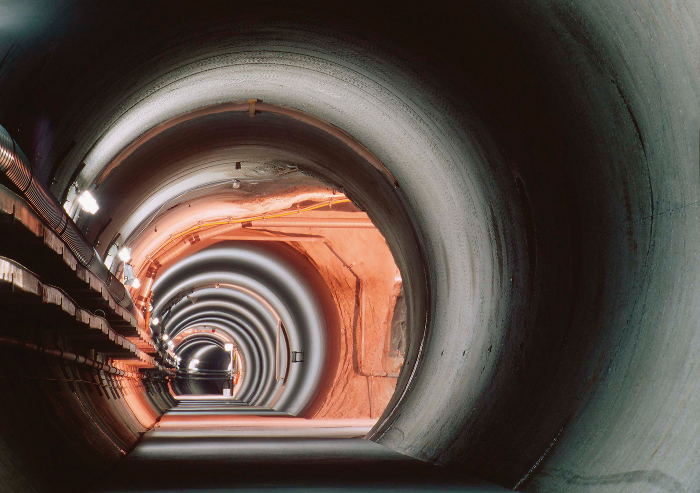

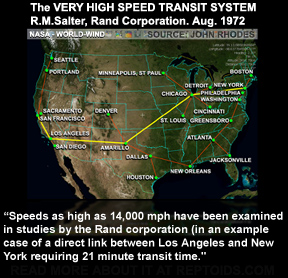
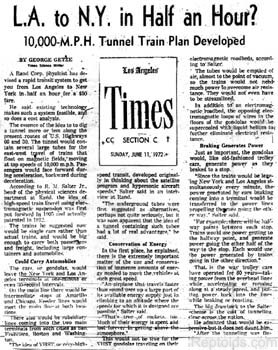 A Rand
corporation physicist has devised a
rapid transit system to get you from Los
Angeles to NY in half an hour for a $50
fair. He said existing technology made
such a system feasible and so does a
cost analysis. The essence of the idea
is to dig a tunnel more or less along
the present routes of U.S. highways 66 and
thirty. The
tunnel would contain several large tubes
for East West travel of trains that float on magnetic
fields, moving at top speeds of 10,000
mph. Passengers would faced forwarded
during acceleration, backward during
deceleration.
According to
R. M. Salter Jr. head of the physical
sciences department at Rand, the idea of
high-speed train travel using
electromagnetic suspension was first put
forward in 1905 and actually patented in
1912. The
trains he suggested now would be single
cars rather than actual trains, and
would be big enough to carry both
passengers and freight, including large
containers and automobiles.
A Rand
corporation physicist has devised a
rapid transit system to get you from Los
Angeles to NY in half an hour for a $50
fair. He said existing technology made
such a system feasible and so does a
cost analysis. The essence of the idea
is to dig a tunnel more or less along
the present routes of U.S. highways 66 and
thirty. The
tunnel would contain several large tubes
for East West travel of trains that float on magnetic
fields, moving at top speeds of 10,000
mph. Passengers would faced forwarded
during acceleration, backward during
deceleration.
According to
R. M. Salter Jr. head of the physical
sciences department at Rand, the idea of
high-speed train travel using
electromagnetic suspension was first put
forward in 1905 and actually patented in
1912. The
trains he suggested now would be single
cars rather than actual trains, and
would be big enough to carry both
passengers and freight, including large
containers and automobiles.
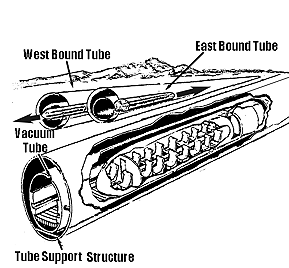 Salter
said. And tunnels, he added, need not be
so expensive to dig is people think. The most expensive
thing about surface routes is the
acquiring right-of-way and removing
buildings that stand on the chosen
route. The tunnel would not incur this
expense. The tunnel, besides carrying
tubes for passenger and freight
gondolas, would carry many of the
utilities now strung across the
countryside on high wires. Salter said
these underground power "lines" could be
super-cooled with helium, like the
electromagnetic loops in the floors of
the gondolas. He said this would so
reduce resistance that power could be
transferred from one end of the country
to the other without appreciable loss.
At the present time long distance
transportation of power is difficult
because of the amount of energy wasted.
He said laser
beams could be carried in the tunnel for
the instantaneous transmission of
messages.
Even the mail could go cross-country in
pneumatic tubes carried in the tunnel.
All this would save money and speed
amortization, thus cutting the overall
cost of tunneling. Salter said
approximately 8000 miles of tunnel
were dug in America and Western Europe
in the 1960s.
That includes mine shafts. But he said
existing tunneling technology could be
vastly improved. Salter said many
tunnels are dug nowadays almost as they
would have been in the dark ages.
Drilling holes in tunnel faces, and
using machines with rotary bits are
methods of tunneling that can be
improved, according to him. He said the tunnel could
be worked on from a great many "faces,"
for instance. Salter suggested, too,
that electronic beams or even water be
used to drill holes for blasting. The
high-powered electrons would drill
blasting holes almost instantaneously.
Salter
said. And tunnels, he added, need not be
so expensive to dig is people think. The most expensive
thing about surface routes is the
acquiring right-of-way and removing
buildings that stand on the chosen
route. The tunnel would not incur this
expense. The tunnel, besides carrying
tubes for passenger and freight
gondolas, would carry many of the
utilities now strung across the
countryside on high wires. Salter said
these underground power "lines" could be
super-cooled with helium, like the
electromagnetic loops in the floors of
the gondolas. He said this would so
reduce resistance that power could be
transferred from one end of the country
to the other without appreciable loss.
At the present time long distance
transportation of power is difficult
because of the amount of energy wasted.
He said laser
beams could be carried in the tunnel for
the instantaneous transmission of
messages.
Even the mail could go cross-country in
pneumatic tubes carried in the tunnel.
All this would save money and speed
amortization, thus cutting the overall
cost of tunneling. Salter said
approximately 8000 miles of tunnel
were dug in America and Western Europe
in the 1960s.
That includes mine shafts. But he said
existing tunneling technology could be
vastly improved. Salter said many
tunnels are dug nowadays almost as they
would have been in the dark ages.
Drilling holes in tunnel faces, and
using machines with rotary bits are
methods of tunneling that can be
improved, according to him. He said the tunnel could
be worked on from a great many "faces,"
for instance. Salter suggested, too,
that electronic beams or even water be
used to drill holes for blasting. The
high-powered electrons would drill
blasting holes almost instantaneously.
